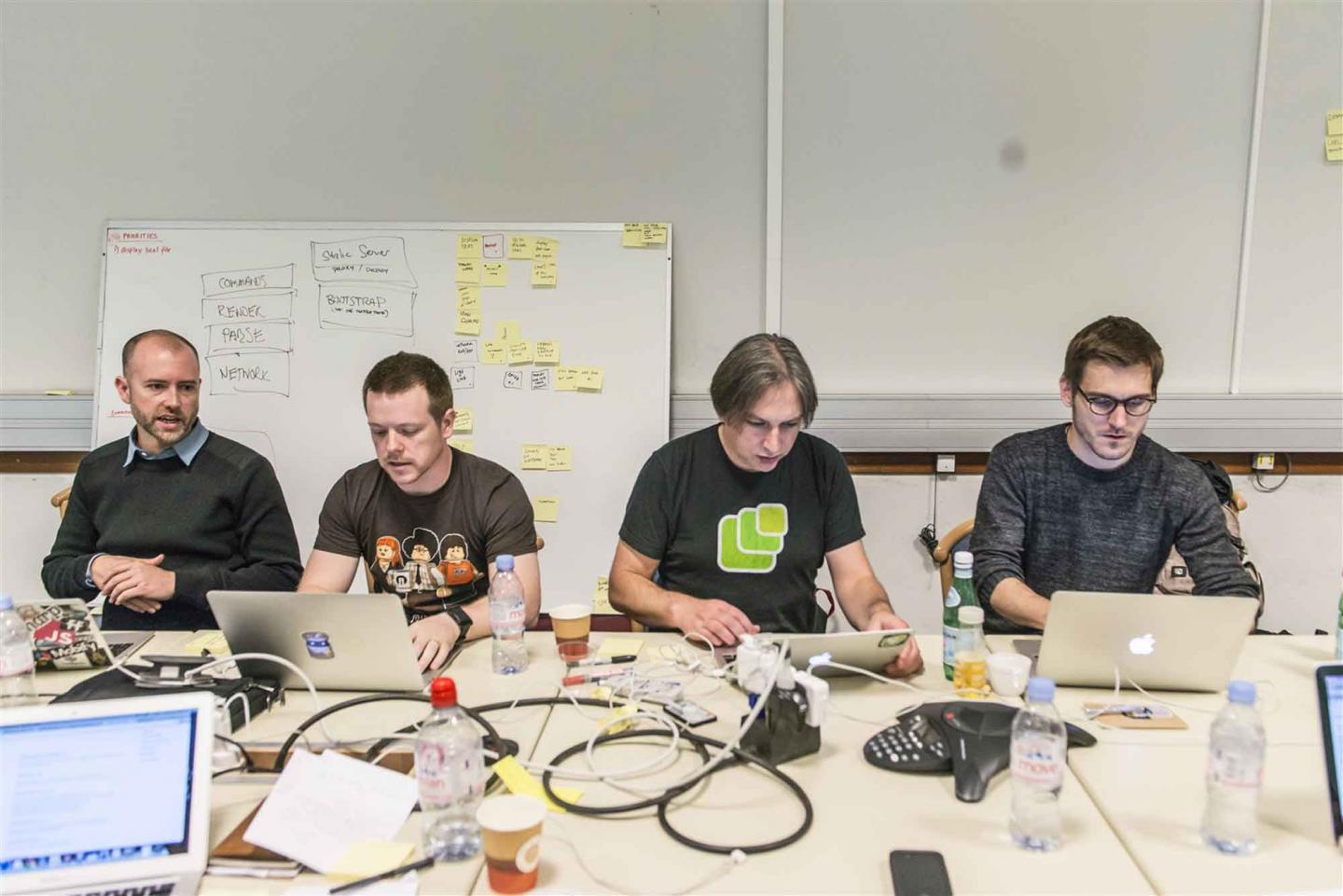Twelve talented web developers have travelled to CERN from all over the world to recreate a key piece of web history: the line-mode browser.
Tim Berners-Lee created the world's first website in 1990 at CERN, using the WorldWideWeb program he wrote on a NeXT computer. But the sophisticated browser he built to view the website was beyond the capabilities of most computers at the time.
Berner's Lee's browser had graphical capabilities, users would follow links by pointing to them with a mouse – then still an uncommon input device – and it even had a contributor mode where users could create and link content together right from the browser.
"The first browser needed to impress," says First Website Project leader Dan Noyes. "It had get people to champion the WWW project, it had to hint at how powerful and useful the web could become – but it was too advanced for the computers that most people had access to."
Berners-Lee hired a student, Nicola Pellow, to develop a much simpler browser that could work with a wide variety of computers and terminals, some of them rather basic. It was so simple that a terminal with a screen only capable of showing 24 rows of 80 characters, and with no mouse, could run it. This simpler browser, the line-mode browser, helped the web to take off.
CERN wants to bring the line-mode browser experience back to life so that people can step back in time and relive what it was like to browse the web in the very early days. No images, no colours, no clicking – just content. An unimpressive medium to a modern audience, the line-mode browser is nevertheless one of the key cultural assets associated with the story of how the web began.
"I think people sometimes take the web for granted," says web developer Jeremy Keith, who travelled from Brighton, UK, to join the development days. "We can be pretty blasé about stuff disappearing online. But restoring the line-mode browser is a way of calling out the fact that the first web page still exists and is still at the first URL, and that that is a cause for celebration. We have to work hard at digital preservation."
For Noyes, bringing back the line-mode browser is part of the fight to conserve CERN's digital history. "So much of the early web is lost – recreating the line-mode browser is a step in the fight against this decay."
Read more: "Why bring back the line-mode browser?" – Opinion piece by First Website project leader Dan Noyes
For a list of the web developers on the project, check out this blog post.
The line-mode browser emulator will be available via http://info.cern.ch in November. To follow progress on this project follow @thefirstwebsite and check in on the project blog. If you have stories, anecdotes or code from the early web at CERN the team would love to hear from you.

